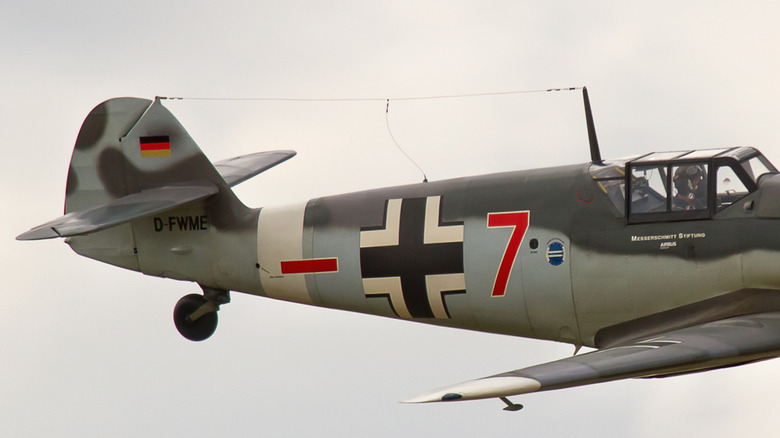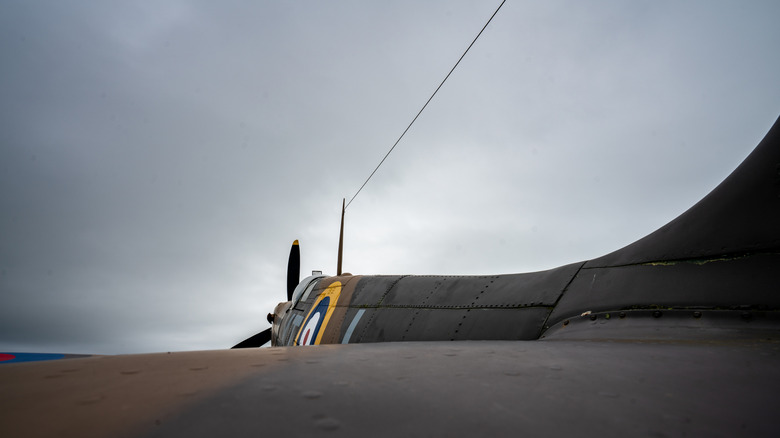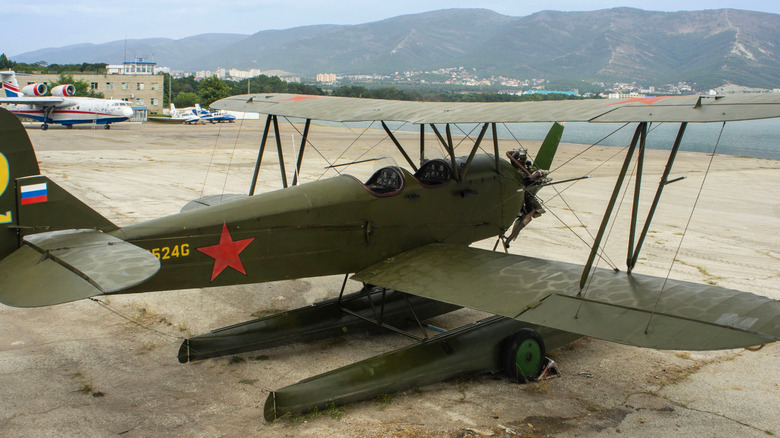What Were The Wires On WW2 Planes For?
In the short time between the first flight of the Wright Brothers at Kitty Hawk in 1903 and the Battle of Britain that started in July of 1940, the airplane had evolved from a rickety DIY creation to a mass-produced war machine. Because it was wartime, the need to deploy as many airplanes as possible meant that they had basic designs allowing for fast production, and one visible design element that several WW2 aircraft have is the wires. These wires or cables serve different functions, including aircraft control, communications, and structural support.
During that era, the primary means by which pilot inputs were transmitted to control surfaces such as rudders, elevators, and ailerons was through pulleys, rods, or wires. The pitch, roll, and yaw of the aircraft were controlled by pilots using a combination of the control stick and pedals, which manipulated the pulley and cable framework. Now categorized as first-generation control systems, this mechanical system was difficult to use as it required the muscle power of the pilot to operate, and made the aircraft heavy because of the number of components used.
As developments in the size and capacity of the aircraft progressed, the mechanical systems were soon replaced by hydro-mechanical systems, reducing the use of wires. These were introduced into the larger bombers and larger transport aircraft, but the hydraulics were restricted to the wings, which controlled the flaps. The main advantage of hydro-mechanical systems is that the mechanical components are assisted by hydraulics, requiring less physical exertion from the pilot to provide input to the control surfaces.
Cables for control and communications
Another important use of the external wires for some WW2 aircraft was for radio communications. Two of the most famous aircraft used during the war, the Supermarine Spitfire, and the highly regarded Junkers JU 87 Stuka, have versions that utilized external wires as part of the onboard radio systems. Essentially acting as antennas, the wires were normally attached to a specialized mast located at the top part of the fuselage and extended down to the vertical stabilizer, where it would be secured to an insulated connector.
The wire used on World War II aircraft was called long wire antennas. The advantage of using a long wire was that it provided maximum signal radiation off the sides of the aircraft and still gave good performance even for the lower frequencies, but its signal strength is weaker in other areas of the aircraft, particularly around the nose and tail.
For the A-series version of the Stuka, the installed radio system was called the FuG VII radio receiver and transmitter, which had a range of 30 plus miles, while for the groundbreaking Mark 1 Supermarine Spitfire, it was the TR9 B1 single-channel radio-transmitter that had a range of five miles when used air to air, and 30-35 miles from air to land. Radio systems back then were analog, and it was used for navigation, communication with ground control, and other aircraft. Additionally, because there was no encryption technology then, each squadron would normally use distinct frequencies to avoid the enemy intercepting communications.
Wired for structural support
Despite being essentially outdated by World War II, biplanes were also used during that war and had several wires in its structure to give it structural support. Biplanes, though not as ubiquitous as the monoplanes that succeeded it, were used by several countries and were mostly fielded in specific roles including naval operations, scouting, and training, rather than combat on the front lines. Examples of biplanes used in WW2 include the Henschel Hs-123,the Gloster Gladiator biplane, and the Fairey Swordfish, which all served with distinction.
The biplanes of WW2 followed the same design as the earlier versions, where wires were used extensively. The purpose of the wires is to give the wings structural integrity and stop them from deforming during flight. Since the wings of biplanes were frequently made of lightweight materials like cloth and wood, wires were necessary to strengthen the wings and guarantee that it could endure the stresses of flight, particularly during maneuvers like dogfights. While initially the only airplane available, advances in materials and structural design, along with the efficiency and performance advantages of monoplanes, rendered biplanes obsolete.
Because of the relatively rudimentary technology of World War II aircraft, the use of wires was a necessity because of the limitations of the available technology. Contemporary airplanes have done away with using wires for surface control and instead utilize fly-by-wire systems. While for communications and navigation, modern planes use HF and VHF radios, Global Positioning Satellites, and may soon integrate artificial intelligence in its systems. Lastly, modern airplanes incorporate lightweight and durable materials, including composites and aluminum for its structural components. Eliminating the use of wires is part of the continuing evolution of aircraft, which has resulted in safer, more reliable, and more efficient airplanes that benefit air travel for everybody today.


